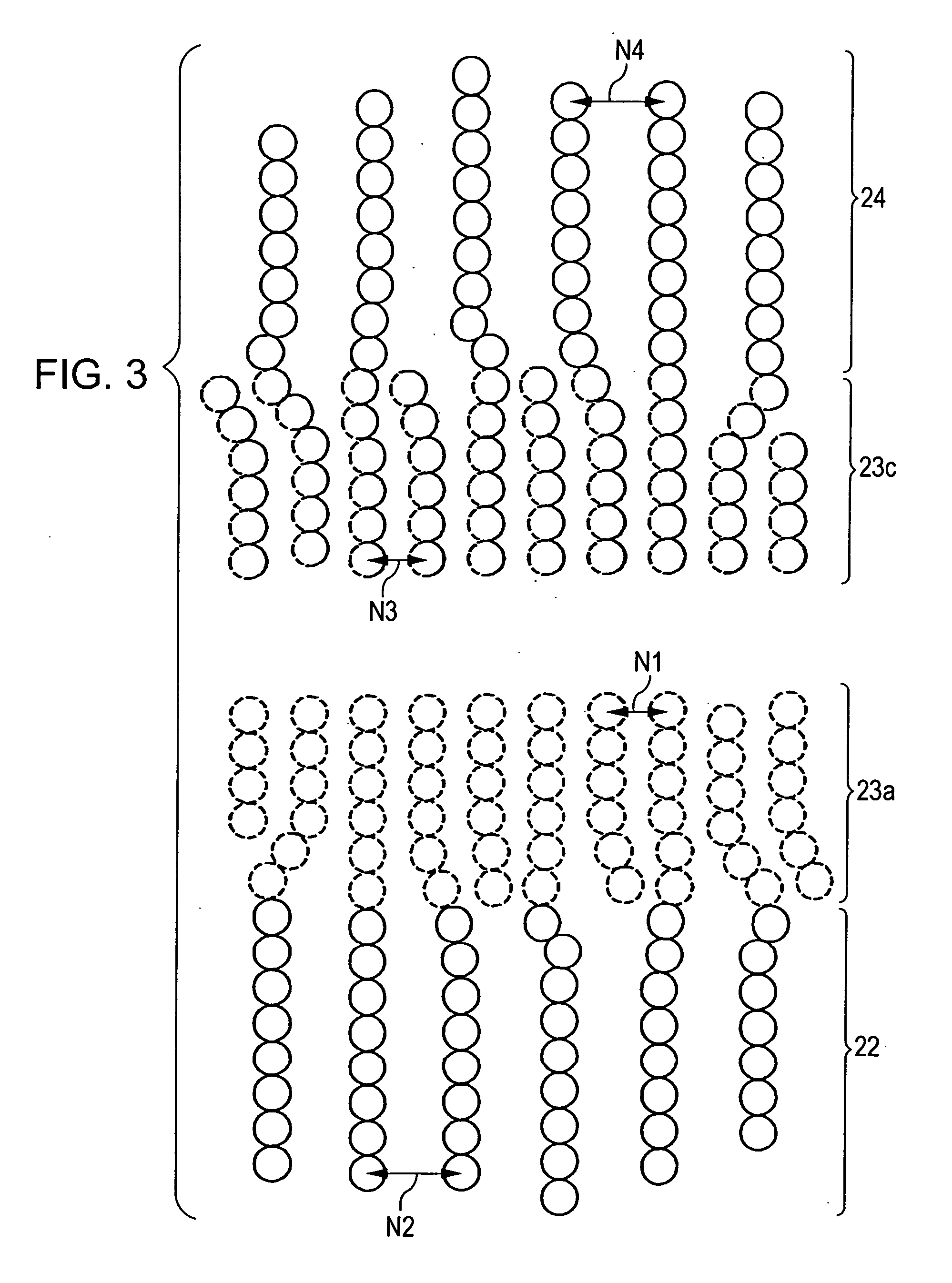Magnetic detecting element having a self-pinned layer
- Summary
- Abstract
- Description
- Claims
- Application Information
AI Technical Summary
Benefits of technology
Problems solved by technology
Method used
Image
Examples
Embodiment Construction
[0074]FIG. 1 is a sectional view of a magnetic detecting element according to a first embodiment of the present invention, viewed from the side surface opposing the recording medium, and FIG. 4 is a fragmentary schematic diagram of the magnetic detecting element shown in FIG. 1.
[0075] The magnetic detecting element shown in FIGS. 1 and 4 has a multilayer composite T1 on a lower shield layer 20 made of a magnetic material.
[0076] The multilayer composite T1 is formed by depositing a seed layer 21, a magnetostriction-enhancing layer 22, a pinned magnetic layer 23, a nonmagnetic material layer 24, a free magnetic layer 25, and a protective layer 26 in that order on the shield layer 20.
[0077] The seed layer 21 is formed of a NiFe alloy, a NiFeCr alloy, Cr, Ta, or the like. For example, the seed layer 21 is formed of 60 atomic percent of Ni0.8Fe0.2 and 40 atomic percent of Cr to a thickness of 35 to 60 Å.
[0078] The seed layer 21 helps the magnetostriction-enhancing layer 22, which is ...
PUM
 Login to View More
Login to View More Abstract
Description
Claims
Application Information
 Login to View More
Login to View More - R&D
- Intellectual Property
- Life Sciences
- Materials
- Tech Scout
- Unparalleled Data Quality
- Higher Quality Content
- 60% Fewer Hallucinations
Browse by: Latest US Patents, China's latest patents, Technical Efficacy Thesaurus, Application Domain, Technology Topic, Popular Technical Reports.
© 2025 PatSnap. All rights reserved.Legal|Privacy policy|Modern Slavery Act Transparency Statement|Sitemap|About US| Contact US: help@patsnap.com



